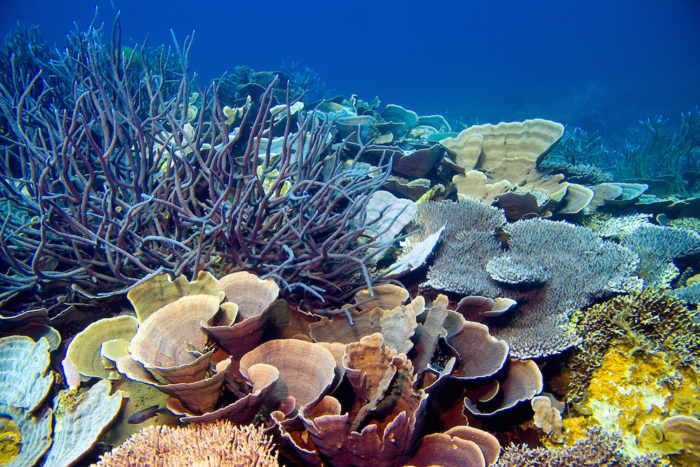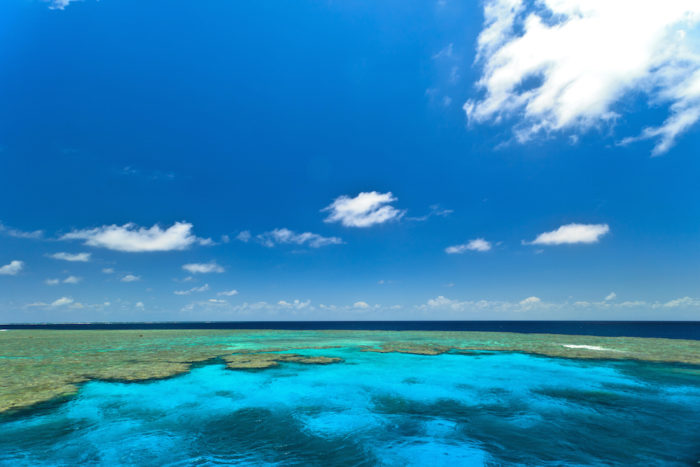So you’ve probably heard that our beautiful Great Barrier Reef is in major strife due to a huge global coral bleaching event. Yet many people don’t know why it’s important, how it happens and what it means for our Reef. That’s where we come in: welcome to Reef in Crisis 101.
Coral bleaching? What's that?
Coral bleaching is caused by unusually high sea temperatures that kill the tiny marine algae, which are vital to coral health. There is actually no evidence of these disasters happening before the late 20th century, and this is the third global coral bleaching since 1998.
To get more into the science of it, coral bleaching occurs when abnormal environmental conditions cause coral to expel tiny photosynthetic algae, called zooxanthellae. The loss of this vibrant algae causes the coral in the reef to turn white and “bleach.” The good news is that bleached coral can recover if the temperature drops and zooxanthellae are able to recolonise them, otherwise…it may die.


What's causing it?
Climate change. There’s no denying the facts that rising temperatures and therefore rising ocean temperatures are the cause of this crisis. Professor Justin Marshal, a reef scientist from Queensland confirmed the cause.
He told the 7.30 Report, “What we’re seeing now is unequivocally to do with climate change. The world has agreed, this is climate change, we’re seeing climate change play out across our reefs.”
You’ve no doubt heard about El Niño: ocean currents cause large changes in rainfall and temperatures in countries around the Pacific Ocean. So for example, Australia is hotter and dryer in El Niño years, and cooler and wetter in La Niña, the opposite pattern. These effects change our ocean temperatures too. Our 2015/2016 summer was extremely hot and long, and this long exposure to hot water is what caused the recent bleaching event. This made one of the worst coral bleaching events the Great Barrier Reef has ever experienced.
Official data from the Great Barrier Reef Marine Park Authority indicates that only 7 % of the total reef area has escaped some degree of bleaching.
“We’ve never seen anything like this scale of bleaching before. In the northern Great Barrier Reef, it’s like 10 cyclones have come ashore all at once. We have now flown over 911 individual reefs in a helicopter and light plane, to map out the extent and severity of bleaching along the full 2300km length of the Great Barrier Reef.
Of all the reefs we surveyed, only 7% (68 reefs) have escaped bleaching entirely. At the other end of the spectrum, between 60 and 100% of corals are severely bleached on 316 reefs, nearly all in the northern half of the Reef.”
– Professor Terry Hughes, convenor of the National Coral Bleaching Taskforce

Why does it matter?
So is it such a bad thing? While reefs make up less than 1% of Earth’s underwater ecosystems, we shouldn’t underestimate their importance:
- They shelter 25 percent of marine species
- The protect shorelines
- They support fishing industries
- They could possibly be home to the next big, undiscovered medical breakthrough
Dead coral then becomes covered with different types of algae and has the ability to cause a change in species of fish and a number of other animals living in the reef. This will soon be what causes the underwater animals and creatures to then become extinct.
These coral bleaching events are also a show of what’s to come if we don’t take action and address climate change. The bleaching events represent an ecological shift and a big enough change to see coral reef ecosystems disappearing forever. Do we want to lose our precious natural beauties?


What can you do?
It might seem like there is no way you as an individual can make a difference, but trust us, every action from every human counts. So how can you respond to the bleaching of the reef and the effects of climate change in general?
- Use renewable energy in your home such as solar panels and tech batteries
- Get your voice heard by your local government representatives, demand they take action to protect coral reefs, stop sewage pollution of our oceans, expand marine protected areas and take steps to reverse global warming
- Respect the environment by walking or cycling when you can, recycling properly and living as waste-free as possible
- Volunteer for a reef clean-up – and if you don’t live near a coral reef, then visit one on vacation!
There are many other ways but these are just a few you can start with.
Feeling inspired?
Check out our calendar for other incredible charity challenges and causes to get behind!






